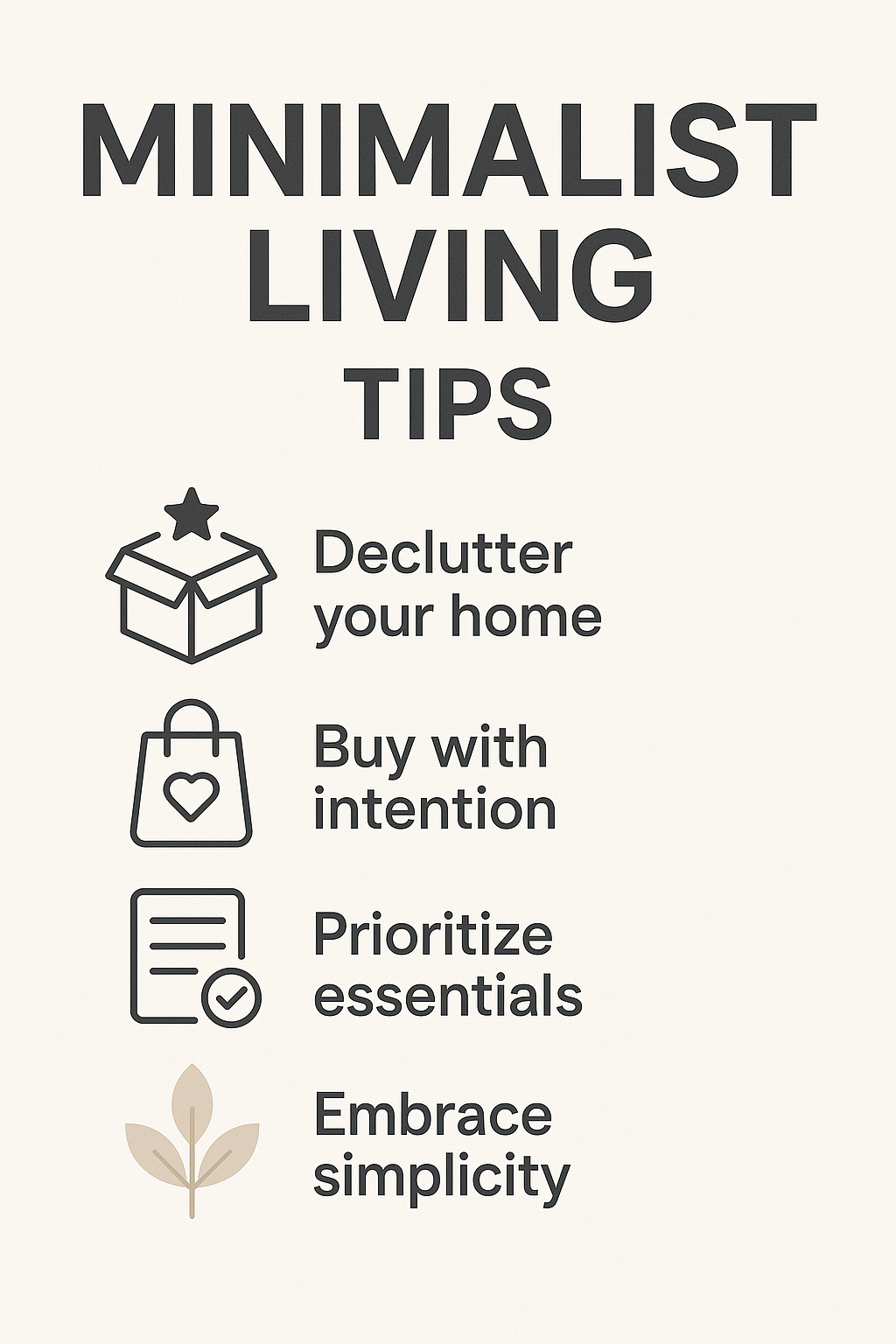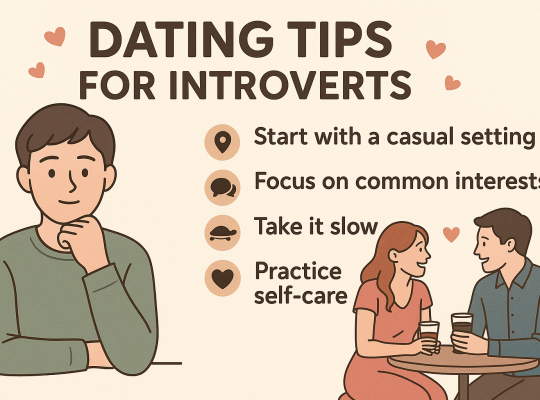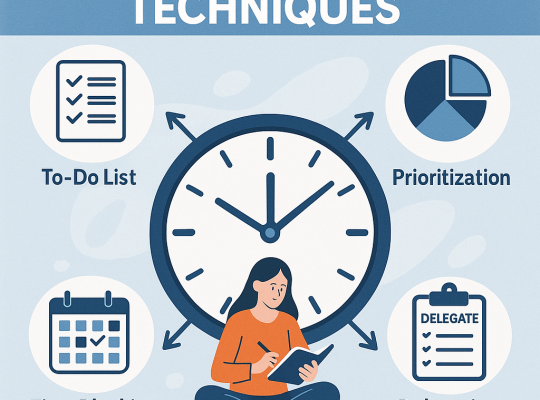In a world that often feels overwhelmingly cluttered, embracing minimalist living can be a powerful antidote. Imagine stepping into a serene space that invites clarity and calm, where each item has meaning and purpose. Minimalism isn’t just about reducing physical possessions; it’s a transformative mindset that fosters creativity, sustainability, and peace. This article unveils six essential minimalist living tips designed to help you streamline your surroundings while cultivating a more focused and intentional life. Whether you’re overwhelmed by the chaos of daily life or simply seeking a fresh perspective, these strategies will guide you toward creating more breathing room in your home and mind. Say goodbye to distractions and welcome the simplicity that can enhance your well-being. Dive in and discover how to elevate your space and mindset!
Understanding Minimalism: A Lifestyle Choice
Minimalism, at its core, is a lifestyle choice that emphasizes the necessity of stripping away excess to focus on what truly matters. It’s a deliberate practice of living with less—be it possessions, distractions, or commitments—to make room for more meaningful experiences and relationships. This philosophy is not about deprivation but about creating space for freedom, clarity, and intentionality. By reducing the clutter in our lives, we can uncover a sense of peace and satisfaction that often eludes us in our fast-paced, consumer-driven world.
The origins of minimalism can be traced back to various cultural and philosophical traditions, including Stoicism, Buddhism, and the teachings of influential thinkers like Henry David Thoreau. These traditions emphasize simplicity, mindfulness, and the importance of inner wealth over material accumulation. In contemporary times, minimalism has gained traction as a counter-movement to the pervasive culture of consumption, offering an alternative path that prioritizes well-being and sustainability.
Choosing minimalism is a personal journey that requires introspection and a willingness to challenge societal norms. It involves evaluating what adds value to our lives and letting go of what doesn’t. This process can be transformative, leading to a profound shift in how we perceive our environment and our place within it. By embracing minimalism, we can cultivate a deeper connection to ourselves and our surroundings, ultimately fostering a more balanced and fulfilling life.
The Benefits of Minimalist Living
The benefits of minimalist living extend far beyond the aesthetic appeal of a tidy home. One of the most significant advantages is the reduction of stress. Cluttered spaces can contribute to feelings of overwhelm and anxiety, whereas an organized environment promotes calm and clarity. By minimizing physical and mental distractions, we can focus more effectively on our goals and passions, leading to increased productivity and a greater sense of accomplishment.
Another key benefit is the enhancement of financial well-being. Minimalism encourages mindful spending and the prioritization of quality over quantity. By consciously choosing to purchase fewer items, we can save money and reduce debt, freeing up resources for experiences and investments that bring lasting joy. This shift in consumption habits also aligns with sustainable living practices, reducing our environmental footprint and contributing to the well-being of the planet.
Moreover, minimalist living fosters a stronger sense of community and connection. When we let go of the pursuit of material possessions, we can redirect our energy toward building meaningful relationships and engaging in activities that enrich our lives and the lives of others. This intentional approach to living encourages us to be present, appreciate the simple pleasures, and cultivate a deeper sense of gratitude and contentment.
Assessing Your Current Space: Decluttering Essentials
Before embarking on your minimalist journey, it’s crucial to assess your current space and identify areas that need attention. This process begins with a thorough decluttering, which involves systematically evaluating each room and deciding what to keep, donate, or discard. Start with areas that tend to accumulate the most clutter, such as closets, drawers, and storage spaces. Take everything out and sort items into categories, making it easier to determine what you truly need and use.
Decluttering can be an emotional process, as we often attach sentimental value to our possessions. To overcome this, ask yourself whether each item serves a purpose or brings you joy. If it doesn’t, it’s time to let it go. Consider the benefits of a clutter-free space: less cleaning and maintenance, more room to breathe, and a clearer mind. Remember, the goal is not to create a sterile environment but to curate a space that reflects your values and supports your well-being.
Once you’ve completed the initial decluttering, establish routines to maintain order. Set aside time each week to tidy up and reassess your belongings. Implementing habits like the “one in, one out” rule can help prevent future clutter and ensure that your space remains a sanctuary of simplicity and tranquility. By regularly evaluating and refining your environment, you’ll cultivate a living space that nurtures your minimalist mindset and enhances your quality of life.
Tip 1: Embrace the “One In, One Out” Rule
One of the most effective strategies for maintaining a minimalist lifestyle is the “one in, one out” rule. This principle is simple: for every new item you bring into your home, you must let go of an existing one. This practice helps prevent the accumulation of unnecessary possessions and encourages mindful consumption. By adhering to this rule, you’ll become more selective about what you purchase and more intentional about what you keep.
Implementing the “one in, one out” rule can be particularly beneficial in areas of the home that tend to attract clutter, such as closets, kitchens, and living rooms. For example, when buying a new piece of clothing, identify an item in your wardrobe that you no longer wear and donate or recycle it. This not only keeps your space organized but also ensures that your belongings remain functional and relevant to your lifestyle.
The beauty of the “one in, one out” rule is that it can be customized to fit your needs. You can apply it to specific categories of items or use it as a general guideline for all your possessions. The key is to stay consistent and mindful of the impact your choices have on your living environment. By practicing this rule, you’ll cultivate a habit of intentional living that extends beyond your physical space and into other areas of your life.
Tip 2: Prioritize Quality Over Quantity
In a culture that often equates more with better, prioritizing quality over quantity is a fundamental principle of minimalism. This approach involves investing in well-made, durable items that offer long-term value rather than accumulating a large number of cheaper, disposable goods. By choosing quality over quantity, you can reduce waste, save money in the long run, and create a more sustainable and satisfying living environment.
When selecting items for your home, consider their functionality, durability, and aesthetic appeal. High-quality products may come with a higher upfront cost, but they often provide greater satisfaction and longevity. For example, a well-crafted piece of furniture can last for decades, while a cheaper alternative may need to be replaced within a few years. By investing in quality, you’ll enjoy the benefits of reliable, beautiful items that enhance your living space.
Prioritizing quality also extends to non-material aspects of life, such as experiences and relationships. Instead of spreading yourself thin by trying to do everything and please everyone, focus on what truly matters to you. Cultivate meaningful connections, pursue passions that bring you joy, and invest your time and energy in activities that align with your values. By emphasizing quality in all areas of your life, you’ll create a more fulfilling and harmonious existence.
Tip 3: Create a Functional and Aesthetic Space
A key aspect of minimalist living is designing a space that is both functional and aesthetically pleasing. This involves carefully considering the layout, organization, and design elements of your home to ensure that each area serves a purpose and contributes to a sense of harmony and tranquility. By creating a balanced environment, you can enhance your well-being and enjoy the benefits of a serene, clutter-free space.
Start by evaluating the functionality of each room. Identify the primary activities that take place in each space and arrange furniture and items accordingly. For example, in the living room, ensure that seating is comfortable and conducive to conversation and relaxation. In the kitchen, organize tools and appliances for efficient meal preparation. By aligning the layout with your daily routines, you’ll create a more intuitive and user-friendly environment.
Incorporate aesthetic elements that reflect your personal style and promote a sense of calm. Choose a neutral color palette to create a cohesive and soothing atmosphere. Add touches of nature, such as plants or natural materials, to bring warmth and vitality to the space. Select artwork and decor that resonate with you and contribute to the overall ambiance. By thoughtfully curating your environment, you’ll create a space that not only looks beautiful but also supports your minimalist lifestyle.
Tip 4: Simplify Your Wardrobe with Capsule Collections
One of the most transformative aspects of minimalist living is simplifying your wardrobe. A capsule collection is a curated selection of versatile, timeless pieces that can be mixed and matched to create a variety of outfits. This approach reduces decision fatigue, saves time, and ensures that your clothing choices align with your personal style and lifestyle needs.
To create a capsule wardrobe, start by evaluating your current clothing and identifying items that you love and wear regularly. Donate or discard items that no longer fit, are worn out, or don’t reflect your style. Aim to keep a core collection of high-quality, versatile pieces that can be easily coordinated. Consider factors such as color palette, fabric, and functionality to ensure that each item complements the others.
When shopping for new clothing, prioritize quality over quantity and choose pieces that can be worn in multiple ways. Focus on classic, timeless styles that won’t go out of fashion and can be dressed up or down for different occasions. By building a capsule wardrobe, you’ll simplify your daily routine, reduce clutter, and cultivate a more intentional and sustainable approach to fashion.
Tip 5: Mindful Consumption: Reducing Impulse Purchases
Mindful consumption is a cornerstone of minimalist living, and reducing impulse purchases is a critical step in this process. In a world filled with constant advertisements and consumer temptations, it’s easy to fall into the trap of buying things we don’t need. Practicing mindful consumption involves being intentional about our purchases and considering their impact on our lives and the environment.
To reduce impulse buying, start by identifying triggers that lead to unnecessary purchases. This could be stress, boredom, or the influence of social media. Once you’re aware of these triggers, develop strategies to manage them, such as finding alternative activities that bring you joy or setting specific shopping goals. Creating a budget and sticking to it can also help you stay focused and avoid impulsive spending.
Before making a purchase, ask yourself whether the item adds value to your life and aligns with your minimalist goals. Consider its quality, functionality, and long-term usefulness. If you’re unsure about a purchase, give yourself time to think it over. Implementing a waiting period, such as 24 hours or a week, can help you make more deliberate and thoughtful decisions. By practicing mindful consumption, you’ll reduce clutter, save money, and contribute to a more sustainable lifestyle.
Tip 6: Cultivating a Minimalist Mindset
Achieving lasting change through minimalism requires more than just decluttering physical spaces; it necessitates cultivating a minimalist mindset. This involves adopting attitudes and beliefs that support simplicity, intentionality, and contentment. By shifting your perspective and embracing the principles of minimalism, you can create a more balanced and fulfilling life.
Begin by practicing mindfulness and being present in the moment. Mindfulness helps you become more aware of your thoughts, feelings, and actions, allowing you to make conscious choices that align with your values. Incorporate mindfulness practices such as meditation, deep breathing, and journaling into your daily routine to cultivate a greater sense of awareness and intentionality.
Another key aspect of a minimalist mindset is gratitude. Regularly reflecting on the things you’re grateful for can help you appreciate what you have and reduce the desire for more. Practice gratitude by keeping a journal, expressing thanks to others, or simply taking a moment each day to acknowledge the positive aspects of your life. Gratitude fosters contentment and helps you focus on the abundance that already exists.
Embrace the idea of “enough” and let go of the pursuit of perfection. Recognize that minimalism is not about achieving a certain aesthetic or living with an exact number of possessions. It’s about finding balance and creating a life that supports your well-being and values. By cultivating a minimalist mindset, you’ll develop a deeper sense of fulfillment and create a lasting foundation for a simpler, more intentional life.
Conclusion: Embracing Minimalism for a Balanced Life
Minimalist living is a journey of self-discovery and intentionality that can transform both your space and mindset. By understanding the principles of minimalism and incorporating these six essential tips, you can create a more serene and purposeful environment that supports your well-being and aligns with your values. Embrace the “one in, one out” rule, prioritize quality over quantity, and design a functional and aesthetic space. Simplify your wardrobe with capsule collections, practice mindful consumption, and cultivate a minimalist mindset to achieve lasting change.
As you embark on this journey, remember that minimalism is not a one-size-fits-all approach. It’s a personal and evolving process that requires patience and self-compassion. Celebrate your progress and be gentle with yourself as you navigate the challenges and rewards of living with less. By embracing minimalism, you’ll discover the freedom, clarity, and contentment that come from focusing on what truly matters.
Ultimately, minimalism is about creating a life that brings you joy and fulfillment. It’s about letting go of the unnecessary and making room for the experiences, relationships, and activities that enrich your life. By adopting minimalist principles, you can cultivate a more balanced, intentional, and harmonious existence. Embrace the journey, and discover the transformative power of minimalism in your space and mindset.




